Address
1st floor B Wing Dinath Terrace Lady Jamshedji Road Landmark : Opposite City Light Theatre, , Mahim, Mumbai, Maharashtra 400016
Work Hours
Mon to Sat: 3PM - 7PM
Overview | Treatment | Surgery | Precautions | After Surgery Care
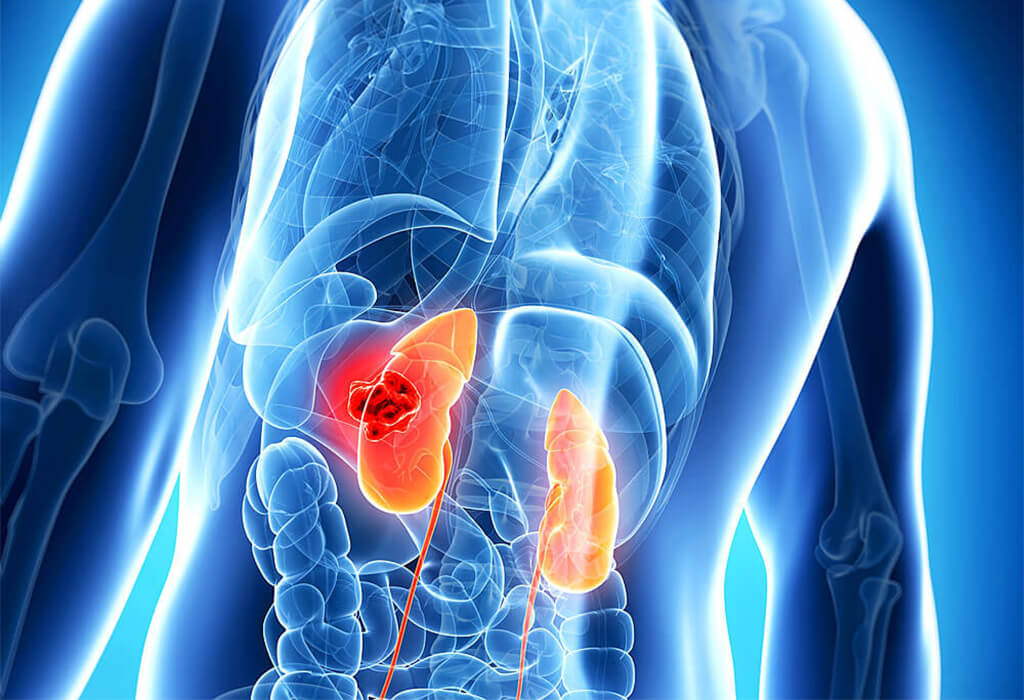
Kidney cancer begins when healthy cells in 1 or both kidneys change and grow out of control, forming a mass called a renal cortical tumor. A tumor can be malignant, indolent, or benign. A malignant tumor is cancerous, meaning it can grow and spread to other parts of the body. An indolent tumor is also cancerous, but this type of tumor rarely spreads to other parts of the body. A benign tumor means the tumor can grow but will not spread..

Sarcoma of the kidney is rare. This type of cancer develops in the soft tissue of the kidney; the thin layer of connective tissue surrounding the kidney, called the capsule; or surrounding fat. Sarcoma of the kidney is usually treated with surgery. However, sarcoma commonly comes back in the kidney area or spreads to other parts of the body. More surgery or chemotherapy may be recommended after the first surgery.
Renal cell carcinoma is the most common type of adult kidney cancer, making up about 85% of diagnoses. This type of cancer develops in the proximal renal tubules that make up the kidney’s filtration system.
It begins in the area of the kidney where urine collects before moving to the bladder, called the renal pelvis. This type of kidney cancer is treated like bladder cancer because both types of cancer begin in the same cells that line the renal pelvis and bladder.
Wilms tumor is most common in children and is treated differently from kidney cancer in adults. Wilms tumours make up about 1% of kidney cancers. This type of tumour is more likely to be successfully treated with radiation therapy and chemotherapy than the other types of kidney cancer when combined with surgery. This has resulted in a different approach to treatment.
Lymphoma can enlarge both kidneys and is associated with enlarged lymph nodes, called lymphadenopathy, in other parts of the body, including the neck, chest, and abdominal cavity. In rare cases, kidney lymphoma can appear as a lone tumor mass in the kidney and may include enlarged regional lymph nodes. If lymphoma is a possibility, your doctor may perform a biopsy and recommend chemotherapy instead of surgery.
A risk factor is anything that increases your chance of getting a disease. Some risk factors can be changed (smoking, for example); but others cannot be changed (your gender or family history). Having a risk factor, or even several risk factors, does not mean you will get kidney cancer, but it may increase your risk.
You may be able to lower your risk of developing kidney cancer by avoiding those risk factors that can be controlled. For example, stopping smoking may lower the risk, and controlling body weight and high blood pressure may help as well.
Smoking increases the risk of developing renal cell carcinoma (RCC). The increased risk seems to be related to how much you smoke. The risk drops if you stop smoking, but it takes many years to get to the risk level of someone who never smoked.
People who are very overweight have a higher risk of developing RCC. Obesity may cause changes in certain hormones that can lead to Renal cell carcinoma.
The risk of kidney cancer is higher in people with high blood pressure. This risk does not seem to be lowered even if someone is taking medicines to treat the high blood pressure.
People with a strong family history of renal cell cancer (without one of the known inherited conditions listed below) have a higher chance of developing this cancer. This risk is highest for people who have a brother or sister with the cancer. It’s not clear whether this is due to shared genes, something that both people were exposed to in the environment, or both.
Many studies have suggested that workplace exposure to certain substances, such as trichloroethylene , increases the risk for RCC.
RCC is about twice as common in men as in women. Men are more likely to smoke and are more likely to be exposed to cancer-causing chemicals at work, which may account for some of the difference.
African Americans have a slightly higher rate of RCC than do whites. The reasons for this are not clear.
Acetaminophen: Some studies have suggested that acetaminophen, a common pain medicine, may be linked to an increase in the risk of RCC.
People with advanced kidney disease, especially those needing dialysis, have a higher risk of RCC.
Some people inherit genes that can increase their chances of developing certain types of cancer. The DNA in each of your cells that you get from your parents may have changes that give you this risk. Some rare inherited conditions can cause kidney cancer. It is important that people who have hereditary causes of RCC see their doctors often, especially if they have already been diagnosed with RCC. Some doctors recommend regular imaging tests (such as CT scans) to look for new kidney tumors in these people.
People with this condition often develop several kinds of tumors and cysts (fluid-filled sacs) in different parts of the body. They have an increased risk for developing clear cell RCC, especially at a younger age. They may also have benign tumors in their eyes, brain, spinal cord, pancreas, and other organs; and a type of adrenal gland tumor called pheochromocytoma. This condition is caused by mutations (changes) in the VHL gene.
People with this condition have a tendency to develop one or more papillary RCCs, but they do not have tumors in other parts of the body, as is the case with the other inherited conditions listed here. This disorder is usually linked to changes in the MET gene.
People with this syndrome develop smooth muscle tumors called leiomyomas (fibroids) of the skin and uterus (in women) and have a higher risk for developing papillary RCCs. It has been linked to changes in the FH gene.
People with this syndrome develop many small benign skin tumors and have an increased risk of different kinds of kidney tumors, including RCCs and oncocytomas. They may also have benign or malignant tumors of several other tissues. The gene linked to BHD is known as FLCN.
People with this condition develop tumors called paragangliomas of the head and neck region and thyroid cancers. They also tend to get kidney cancer in both kidneys before age 40. It is caused by defects in the genes SDHB and SDHD.
People with this syndrome have a high risk of breast, thyroid and kidney cancers. It is linked to changes in the PTEN gene.
People with this syndrome develop many, usually benign (noncancerous) tumors in different parts of the body including the skin, brain, lungs, eyes, kidneys, and heart. Although the kidney tumors are most often benign, occasionally they can be clear cell RCC. It is caused by defects in the genes TSC1 and TSC2.
Studies show there is a link between kidney cancer and kidney disease. Kidney cancer is most common in people between the ages of 65 and 74. Men are twice as likely as women to develop the disease. It’s also more common in Native American and Black populations. Kidney cancer is much less common in children
Some studies show that people with kidney disease may have a higher risk for kidney cancer due to:
Often, kidney cancer is found when a person has an imaging test, such as ultrasound, magnetic resonance imaging (MRI), or computed tomography (CT) scan for another reason. In its earliest stages, kidney cancer causes no pain. Therefore, symptoms of the disease usually appear when the tumor grows large and begins to affect nearby organs.
People with kidney cancer may experience the following symptoms or signs. Symptoms are changes that you can feel in your body. Signs are changes in something measured, like by taking your blood pressure or doing a lab test. Together, symptoms and signs can help describe a medical problem. Sometimes, people with kidney cancer do not have any of the symptoms and signs described below. In other cases, the cause of a symptom or sign may be a medical condition that is not cancer.
Blood in the urine
Pain or pressure in the side or back
A mass or lump in the side or back
Swelling of the ankles and legs
High blood pressure
Anemia, which is a low red blood cell count
Fatigue
Loss of appetite
Unexplained weight loss
Fever that keeps coming back and is not from a cold, flu, or other infection
In the testicles, a rapid development of a cluster of enlarged veins, known as a varicocele, around a testicle, particularly the right testicle, may indicate that a large kidney tumor may be present
If you are concerned about any changes you experience, please talk with your doctor. Your doctor will ask how long and how often you’ve been experiencing the symptom(s), in addition to other questions. This is to help figure out the cause of the problem, called a diagnosis.
Your doctor may consider these factors when choosing a diagnostic test:
Your doctor may recommend running laboratory tests on a tumour to identify specific genes, proteins, and other factors unique to the tumour. This may also be called molecular testing of the tumour. The results of these tests can help determine your treatment options.
The doctor may recommend having a blood test to check the number of red blood cells in the blood. A urine test may be recommended to look for blood, bacteria, or cancer cells. These tests may suggest that kidney cancer is present, but they cannot be used to make a definite diagnosis.
A biopsy is the removal of a small amount of tissue for examination under a microscope. This is usually performed as an outpatient procedure using local anaesthesia by an interventional radiologist. Anaesthesia is a medicine that blocks the awareness of pain. Other tests can suggest that cancer is present, but only a biopsy can make a definite diagnosis. A pathologist then analyzes the sample(s) and writes a pathology report describing the results.
A CT scan takes pictures of the inside of the body using x-rays taken from different angles. A computer combines these pictures into a detailed, 3-dimensional image that shows any abnormalities or tumours. A CT scan can be used to measure the tumour’s size. For patients being evaluated for a renal mass, a non-contrast CT scan is done first to evaluate for any non-cancerous types of disorders like a kidney stone or bleeding cyst. Then, a contrast medium is injected. Contrast medium is a special dye that provides better detail on the images taken by CT scans. This dye is injected into a patient’s vein. Renal cysts will not take up the contrast medium, but renal tumors will. In addition the contrast will help look for any involvement of cancer in the nearby blood vessels, lymph nodes, or faraway organs like the liver. A non-contrast CT showing fat in a renal tumour suggests it is a benign angiomyolipoma, and nonsurgical treatment options may be recommended. If patients have severe chronic kidney disease or kidney failure, then the contrast medium cannot be safely used. A CT scan of the urinary tract is called a CT urogram. Note that a PET-CT scan is not useful in renal cell carcinoma because the contrast used in most PET scans is excreted through the kidneys and bladder, which limits the ability to see kidney tumours.
An MRI uses magnetic fields, not x-rays, to produce detailed images of the body. MRI can be used to measure the tumor’s size. A special dye called gadolinium is given before the scan to create a clearer picture. This dye is injected into a patient’s vein. Gadolinium is also taken up by cancers and seen more clearly on the final pictures.
An x-ray is a way to create a picture of the structures inside of the body, using a small amount of radiation.
Occasionally, special tests called cystoscopy and nephro-ureteroscopy may be done for urothelial cancer of the upper urinary tract or renal pelvis. They are not often used for renal cell carcinoma unless imaging also finds a mass or stone in the bladder. During these procedures, the patient is sedated, while a tiny, lighted tube is inserted into the bladder through the ureter and up into the kidney. Sedation is giving medication to become more relaxed, calm, or sleepy. This procedure can be used to obtain tumour cells for examination under a microscope, to perform a biopsy, and sometimes to completely destroy small tumours.
The most common treatment for kidney cancer is with surgery to remove all or part of the kidney. However, your treatment will depend on the stage of your disease, your general health, your age, and other factors.
Surgery is the most common treatment for kidney cancer—most people with early-stage cancer (stages 1, 2, and 3) can be cured with surgery.
Partial nephrectomy
In a partial nephrectomy, the tumor or the part of the kidney with the tumor is removed to leave behind as much of the kidney as possible
Radical nephrectomy
In a radical nephrectomy, the entire kidney is removed. If needed, the surrounding tissues and lymph nodes may also be removed.
Surgical approaches
Ask your doctor about the surgical approach that is best for you:
Thermal ablation
Thermal ablation kills the tumor by burning or freezing and is most often used for small tumors in people who are not good candidates for nephrectomy surgery
Active surveillance
Active surveillance is used if a small tumor is less than 4 centimeters (1.5 inches)
Chemotherapy and radiation
Forms of chemotherapy and radiation used in other forms of cancer are not usually effective treatments for most forms of kidney cancer
For people with advanced kidney cancer that has spread to other parts of the body, treatment with a drug may be recommended along with surgery, or instead of surgery. Some of these drugs are given to you as a pill that you take by mouth; others are given as an injection. Much progress has been made in recent years, and people with advanced kidney cancer are living much longer than ten years ago.
Medicine is often used for advanced kidney cancer that has spread to other parts of the body or where surgery cannot be done.
Immunotherapy uses the body’s defense system (immune system) to stop or slow the growth of cancer cells.
Monoclonal antibodies attack a specific part of cancer cells
Checkpoint inhibitors help the immune system recognize and attack cancer cells
Vaccines give an overall boost to the immune system
Anti-angiogenic therapies reduce the blood supply to a tumor to slow or stop its growth
Targeted therapies directly inhibit the growth of the cancer
Taking steps to improve your health may help reduce your risk of kidney cancer. To reduce your risk, try to:
If you smoke, quit. Many options for quitting exist, including support programs, medications and nicotine replacement products. Tell your doctor you want to quit, and discuss your options together.
Work to maintain a healthy weight. If you're overweight or obese, reduce the number of calories you consume each day and try to be physically active most days of the week. Ask your doctor about other healthy strategies to help you lose weight.
Ask your doctor to check your blood pressure at your next appointment. If your blood pressure is high, you can discuss options for lowering your numbers. Lifestyle measures such as exercise, weight loss and diet changes can help. Some people may need to add medications to lower their blood pressure. Discuss your options with your doctor.
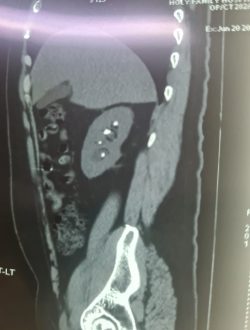
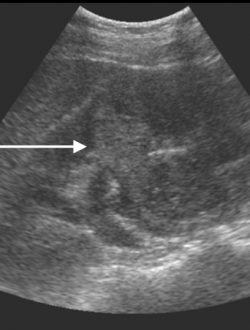
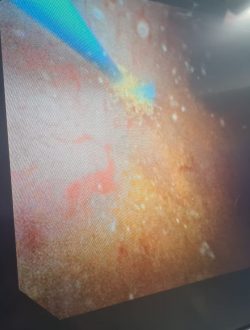
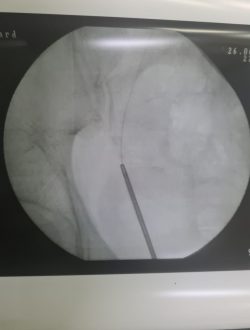

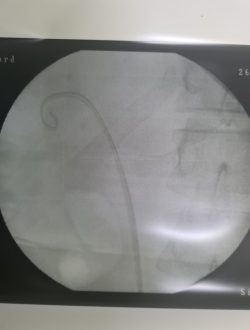
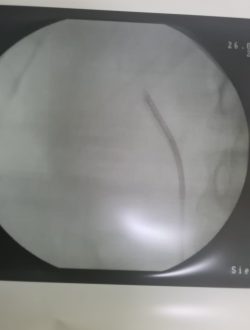
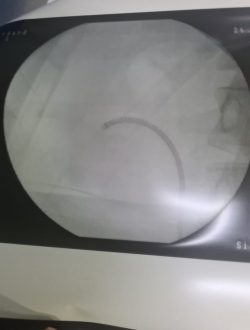

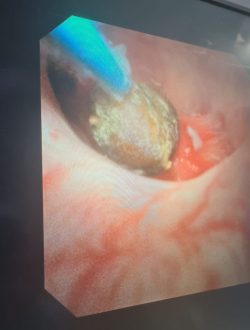
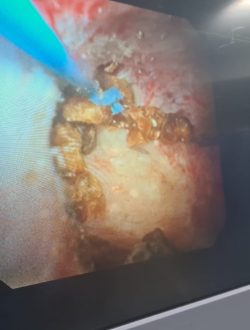
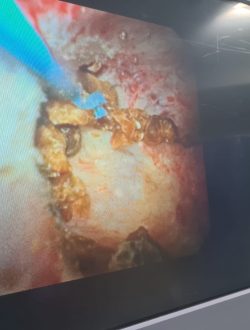
Dr. Utture is Outstanding Doctor who gave good treatment to my 75 years old mother who was suffering from Kidney problem and stomach ache since last 3 years.
Thanks to Dr. Utture
Regards
I have been treated by Dr Anand Utture for multiple kidney stones.He is very knowledgeable, gives right advice, easily approachable and explains in simple language the problem and course of treatment.Takes special care of his patients, truly dedicated doctor
Extremely grateful to Dr Anand Utture for his timely and accurate diagnosis for treating my mother (81 years) for her kidney stones.
very experienced urologist & has done correct diagnosis & treatment of My Grandmother(81 yrs) for kidney stones.





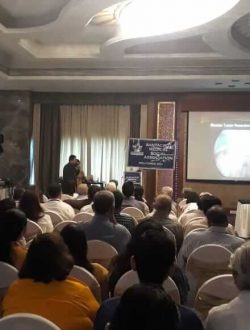





Kidney stones increase the risk of developing chronic kidney disease. If you have had one stone, you are at increased risk of having another stone. Those who have developed one stone are at approximately 50% risk for developing another within 5 to 7 years.
Complications from kidney cancer may include:
Doctors on your cancer treatment team might include:
A urologist: a doctor who specializes in treating diseases of the urinary system (and male reproductive system)
A radiation oncologist: a doctor who treats cancer with radiation therapy
A medical oncologist: a doctor who treats cancer with medicines such as chemotherapy, targeted therapy, or immunotherapy
You might have many other specialists on your treatment team as well, including physician assistants (PAs), nurse practitioners, psychologists, nutritionists, and other health professionals.
In addition to abdominal pain and general fatigue, some of the most common symptoms of kidney cancer include:
In many cases, kidney cancer isn’t diagnosed until it has reached an advanced stage. This occurs because kidney cancer can grow without causing any noticeable symptoms, and because it’s often difficult to detect small kidney tumors during a physical examination given the kidneys’ location within the abdomen.
With this in mind, it would make sense that you would want to know how to detect kidney cancer as early as possible. As of now, the scientific community has not recommended any screening tests for individuals who have an average risk of developing kidney cancer. It should be noted, however, that a urinalysis can sometimes detect trace amounts of blood in the urine, which can be a sign of kidney cancer. Because a urinalysis is often performed as part of a routine physical examination, it’s important to regularly visit your medical provider for checkups.
Dr Anand Utture is a Senior Urologist who is internationally recognized for his surgical expertise and academic contribution to the field of Urology.
Book AppointmentMake an appointment with your doctor if you have any signs and symptoms that worry you.
Seek immediate medical attention if you experience:

